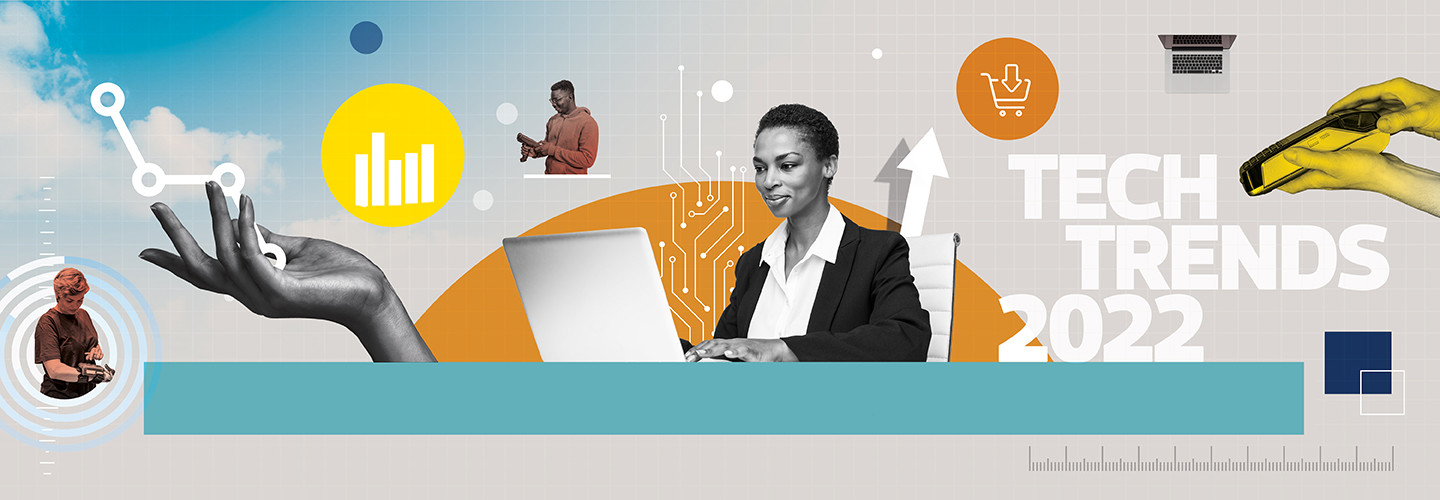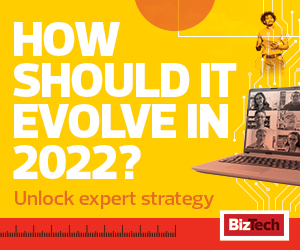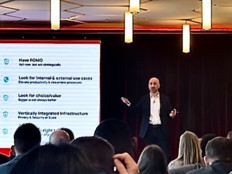Retailers are still settling into their new normal after the changes wrought by the pandemic. Many developed new digital tools to continue serving their customers, adding services such as buy online, pickup in-store (BOPIS) to accommodate social distancing. Now that much of the dust has settled on those restrictions, retailers see that some of those services are still in demand, while customers continue to place an emphasis on the in-store experience.
E-commerce did peak last year, but it has since returned to relatively normal levels (though still higher than before the pandemic). According to NRF, 80 percent of purchases are still made in-store. Because of this, 2022 will be a year when retailers more widely adopt in-store tools that once were viewed as futuristic, while maintaining the digital services that customers have grown accustomed to.
These are the technology trends that will shape the industry in 2022.
1. Expanded Use of IoT-Enabled Devices
The Internet of Things has long promised to revolutionize the consumer experience across industries, including retail. As the prices of connected devices have gone down, adoption has gone up. The effect can be seen in traditional processes such as checkout, but also in newer technologies such as smart shelves and smart shopping carts — solutions that were once considered emerging, but are now being adopted in stores.
Click the banner below to learn what CDW CTO Sanjay Sood is looking out for in 2022.
The types of IoT enabled devices used are also expanding. Customers now commonly use wearables for checkout, but retailers have found uses for wearable devices as well. Employees can use wearables to streamline operations internally, and organizations can use them to personalize experiences for shoppers. These are just some of the uses of IoT devices that will likely expand dramatically in 2022.
2. Modernized Checkout Experiences
Digital trends in retail spurred by the pandemic have changed customers’ expectations of convenience. Whether it’s BOPIS or contactless transactions, shoppers are now accustomed to completing their purchases in the manner that is most convenient for them at the moment.
Delivering on this expectation requires a modernized checkout approach. This includes point-of-sale improvements such as mobile and contactless options, but it also incorporates a holistic approach that integrates connectivity and applications. Organizations need to use the latest technology in each of these areas to accommodate customer expectations and industry trends.
Modernized checkout — with a multilayered strategy for implementing it — will see dramatic growth in 2022.
3. Adoption of Centralized Inventory Management
Offering multiple channels for making purchases has become a mandate for retailers. Organizations have adapted by increasing the number of shipping locations and the options for purchase, but the effects don’t end with customer satisfaction.
Click the banner below to follow these trends with the top voices in retail tech.
Just as omnichannel retail will to push the checkout experience to modernize, this trend demands sophisticated inventory management to properly track products at every stage of the process. Whether goods are in a warehouse or in-store, organizations will need accurate, real-time data to be deliver on promises for customers. This will be particularly important as supply chain woes will likely continue into the beginning of 2022.
Look for retailers to adopt solutions that integrate IoT, near-field communication and artificial intelligence into a central location for optimal tracking.
4. Renewed Focus on Data Privacy
If there is one aspect of IT that has gotten more mainstream attention than any other over the past year, it’s cybersecurity. Several high-profile ransomware attacks put organizations of all sizes and across all industries on high alert as bad actors took advantage of businesses’ quick shifts to remote work. For an industry such as retail, this increased threat has been paired with growing scrutiny over how customer data is handled.
These circumstances place data privacy at the heart of any retailer’s IT strategy. There are new government guidelines that can help define these strategies, which range from low-level solutions such as multifactor authentication to AI-powered alert tools. Seeking guidance from a trusted partner can help navigate the best solutions for your organization while abiding by any relevant regulations.
After seismic shifts in the industry, retailers are leaning on technology more than ever. These areas are where IT leaders should be directing their attention.












